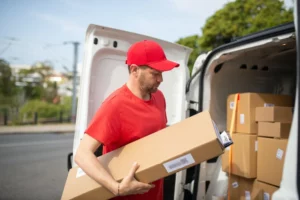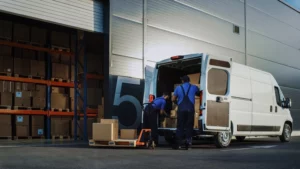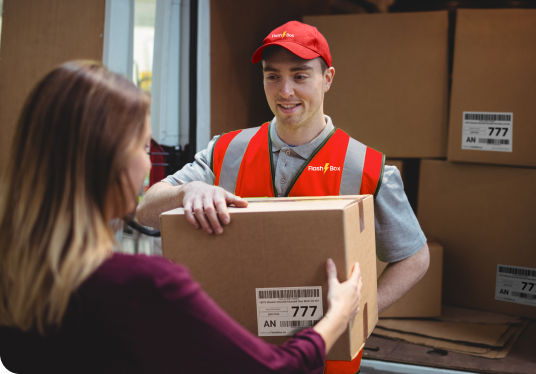Logistics efficiency and last-mile delivery tracking are more important than ever. As companies strive for faster delivery times, they must have the correct data and technology to ensure orders arrive on time.
Companies can get real-time data about the status of their shipments by using last-mile delivery tracking, allowing them to make informed decisions about optimizing their supply chains.
Customers can also track their orders and be notified of any delays or changes in delivery, allowing them to plan accordingly.
To meet customer expectations in today’s world of immediacy, businesses must have efficient logistics and last-mile delivery tracking systems in place. Companies can ensure orders arrive on time and customers are satisfied by using data and technology to monitor their shipments and provide real-time customer updates.
Last-mile delivery tracking also provides valuable insights into customer preferences and regional delivery trends, allowing businesses to make educated decisions about their supply chains and delivery strategies.
Businesses can stay ahead of the competition and provide the best possible service to their customers by utilizing these capabilities.
What Is Logistics?
Logistics is responsible for the delivery of goods and services from one point of origin to the customer. A company receiving an order from a customer, obtaining the necessary resources to fulfill the order, and then shipping the product to the customer is an example of logistics. This procedure entails managing supplier relationships, inventory management, shipment tracking, and customer service.
Transportation of goods is also included in logistics, which includes scheduling shipments, selecting the best mode of transport, and managing delivery times. Logistics also includes return management, which ensures that products are returned on time and that the customer is satisfied with their purchase.
These activities necessitate effective coordination in order to ensure that the customer is satisfied with their order and that the products they receive are of the highest quality.
Logistics is also important in the payment process or app’s operation, from confirming the order to ensuring enough personnel and delivery personnel are available, as well as having enough fuel for transportation and being able to locate the customer.
All of these tasks require efficient logistics systems to ensure that the client receives their order on time. The tech-enabled slice you have there would not be possible without these logistics systems in place.
Areas For Potential Errors
Any journey, from beginning to end, has the potential for something to go wrong, and even something as simple as ordering pizza can show this. From resource gathering to machine construction and assembly, cardboard box and ingredient production, transportation and delivery, every step must be carefully managed to ensure the pizza arrives on time. The logistics chain for ordering from Amazon is even more intricate and complex.
Every step, from the initial order to sorting, labeling, and distribution, must be closely monitored to guarantee that the product arrives in the same condition as you expected. It’s easy to overlook the amount of work and effort that goes into something seemingly simple as pizza delivery. Still, it’s a testament to the efficiency and effectiveness of the logistics chain.
Punctuality Matters: The Impact of Delivery Windows
Delivery windows with consequences have become a frequent thing in modern life. From grocery deliveries to antique clocks to multiple massive warehouse and transportation chains, businesses are expected to adhere to strict deadlines to avoid the consequences of lost revenue, missed logistics chain connections, corporate reputation loss, and eventually failure and replacement by companies that do not miss those deadlines and incur those consequences.
It’s a way of life that has been instilled in at least two generations in the West, and as technology advances, the demands for last-mile delivery services will only become more significant.
What Is Last-Mile Delivery Service?
Last-mile delivery refers to the final stage of delivering goods from a retailer to a customer’s home. This final step may involve local delivery services, parcel delivery services, or a combination of the two. Last-mile delivery includes all activities associated with the delivery, such as order tracking, reverse logistics, and customer service. Last-mile delivery services are transportation services that get whatever you order.
Last-mile delivery is an essential component of the customer experience. Customers expect orders to be delivered quickly and securely; last-mile delivery services are critical to meeting those expectations.
Last-mile delivery solutions can help retailers stay ahead of the competition by providing a fast and reliable delivery experience, from local delivery services to parcel delivery services and everything in between.
Additionally, reverse logistics and order tracking services can provide customers with greater visibility into their orders, allowing them to stay informed and control their delivery.
These services work together to provide a comprehensive last-mile delivery experience that meets customer expectations while also assisting retailers in improving their bottom line.
Last-Mile Delivery Tracking
Customers expect to be able to track their packages from when they are sent to when they arrive at their door in the internet age. This is no longer a lofty goal; last-mile delivery tracking systems make it possible with pinpoint accuracy.
Customers can track each step of the delivery process and know when their package will arrive using an app on their mobile device. Transparency like this fosters trust in the customer-vendor relationship and makes customers feel more secure and confident in their purchases.
Last-mile delivery tracking systems also provide fleet managers with real-time visibility. These systems can provide real-time information on delivery locations, send notifications if a delivery is delayed, and direct drivers to their next destination. Customers benefit from this by receiving their orders quickly and efficiently.
Maximizing Delivery Efficiency With Data
Data availability has transformed how businesses can track and manage their processes, particularly in the delivery sector. Data and its analysis are critical to success, from texting customers with precise delivery times to tracking packages as they move closer and closer to their destination to receiving beef consignments exactly when they need them.
Last-mile delivery companies, drivers, fleet managers, logistics software engineers, satellite engineers, data layering engineers, and fuel burn analysts rely on data to run their businesses. They are performing so with increasing accuracy and precision.
This level of detail and accuracy was previously unheard of, and now businesses can deliver packages on time and accurately track their movements thanks to data. So, the next time you wonder why your package arrived ten minutes late, remember that precision and accuracy in the delivery sector would still be a pipe dream without data availability.
Conclusion
Logistics and last-mile delivery tracking systems will become increasingly important as demand for fast and dependable delivery services grows. Companies must use data and technology to ensure that their orders arrive on time and that customers can see the delivery process.
Companies can use FlashBox to access a comprehensive last-mile delivery tracking solution that allows them to monitor shipments and ensure orders arrive on time.
FlashBox provides the data and technology needed to optimize the delivery process and keep customers informed and satisfied, from real-time shipment tracking to demand to track.




